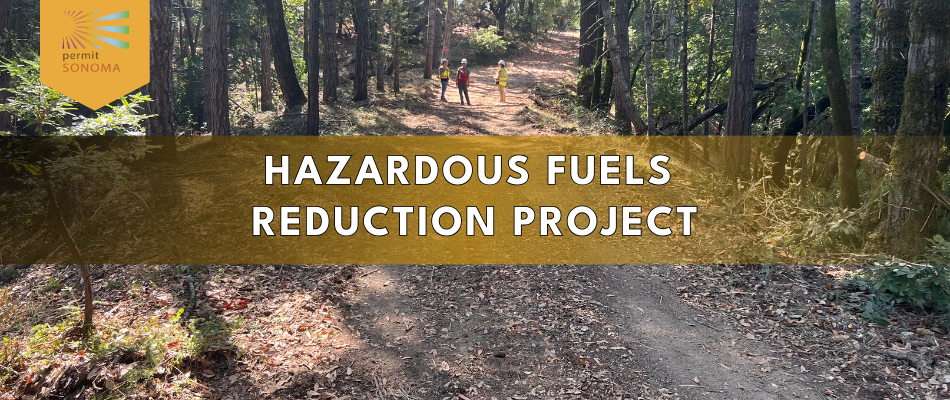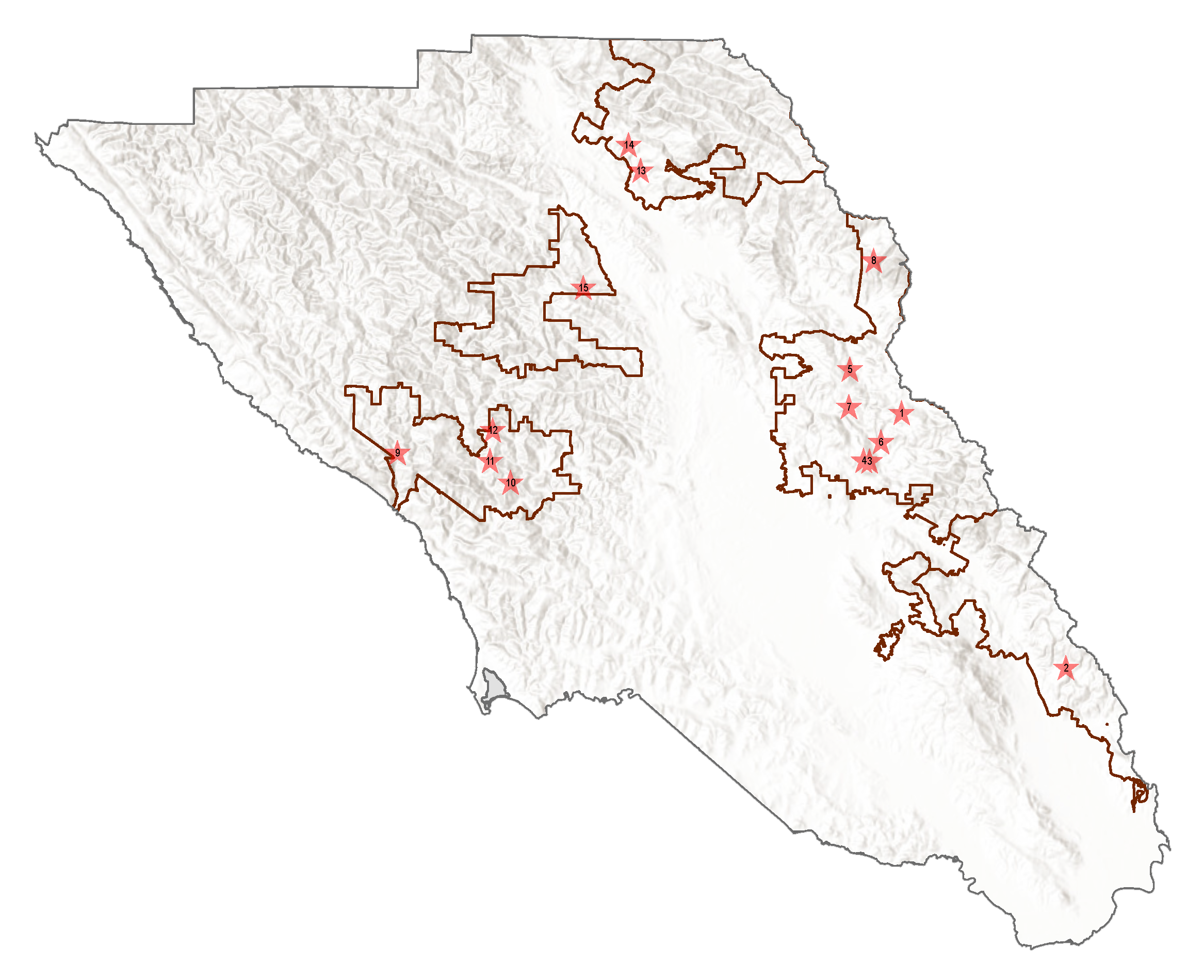
Project Update | January 2025
Phase 1 for the Hazardous Fuels Reduction Project was completed in late 2024. All materials required by the grant funder, FEMA, have been submitted and Permit Sonoma now awaits the release of Phase 2 funding (for the implementation of treatments). We currently anticipate beginning Implementation of the five Implementation Sites in 2026, depending on FEMA’s release of funding. Participants will be notified by website updates and direct contact when Phase 2 begins.
The Hazardous Fuels Reduction Project is a free vegetation management opportunity for private landowners in select locations. The aim of this project is to reduce wildfire risk to life and property while fostering healthy landscapes that are resilient to wildfire. The project brings fire professionals, natural resource experts, and community-based organizations together to identify high-priority locations for large-scale vegetation management activities.
The project will reduce hazardous fuel loads on public and private lands and road networks within Sonoma County. The benefits of ecologically appropriate hazardous fuel reduction projects include reducing wildfire risks to people, property, roadways, critical infrastructure, natural resources, and other community assets while improving forest health and resilience.
The project is 100% voluntary for landowners in select project locations. Fuel reduction work will only occur IF enough landowners say "yes" to participating and allow site visits and treatments on their property. Effective large-scale fuel reduction treatments aim to connect vegetation management work across property ownership, jurisdictions, and ecological landscapes.
The project receives funding from a Federal Emergency Management Agency (FEMA) Hazard Mitigation Grant Program (HMGP), awarded to Permit Sonoma, with local matching funds from the County of Sonoma.
Project Timeline
The Hazardous Fuels Reduction Project has two phases:
- Phase 1: Outreach, coordination, and project planning to identify sites for fuel reduction treatments. Anticipated to be completed in 2024.
- Phase 2: Implement the selected fuel reduction treatments. Anticipated to begin in 2025, dependent on the completion of Phase 1 and FEMA's release of funding.
Project Areas
This project will only fund vegetation management work within the four pre-determined project areas. The four project areas are Austin Creek/Dry Creek, NE Geyserville, Lower Russian River-Cazadero, and East Sonoma. These project areas were identified based on burn history, fuel loads, population density, road networks, and other factors.
Fuel reduction treatment sites were identified in Phase 1 in coordination with local and state fire agencies, technical experts, and community-based organizations as high interest locations for vegetation management activities. The Hazardous Fuels Reduction Project proposes wildfire mitigation through hazardous fuels reduction treatments on a minimum of five sites, referred to as the “Implementation Sites.”
Implementation Sites:
• Muniz Ranch Road to PPI Driveway
• Siri Repeater Site
• Ida Clayton Fuel Break
• Redwood Hill to Barham Fuel Break
• Barham Communications Site
Three additional treatment sites, referred to as the “Sites in Reserve,” may be treated if Phase 2 implementation funding remains after treatment of the five Implementation Sites.
Sites in Reserve:
• Kings Hill Road to Fechter Road Connector
• Pocket Ranch Road Connector
• Ridge Oaks Road
Eight project-identified sites will not be moving forward to treatment implementation, but were included in the CEQA analysis for the project, titled the Sonoma County FEMA Wildfire Mitigation Project Project-Specific Analysis (PSA). These eight sites include Chemise Road, Mill Creek Road, Old Cazadero Road, Chimney Rock Road, Mark West Springs Road to Porter Creek Road, Franz Valley Road, Calistoga Road, and the Cavedale to Norrbom Fuel Break.
The project cannot fund fuel reduction work on all potential sites. Final site selection will be based on landowner interest, current conditions, and other considerations.
Project Activities
Work will only occur where owners have opted-in to the fuel reduction activities. This project can fund the following hazardous fuel reduction activities on proposed project sites:
- Roadside vegetation management for emergency egress/ingress.
- Strategic shaded and ridgetop fuel breaks.
- Prescribed grazing.
- Weed management.
- Hazard tree removal.
- Ecological restoration.
Vegetation Management activities aim to reduce wildfire fuel loads, calm wildfire behavior, improve evacuation and emergency response safety, and foster healthier ecosystems in project areas by reducing:
- Dead and dying trees and plants.
- Excessive ladder fuels.
- Highly flammable non-native plants like Eucalyptus and Broom.
- Some young and mature trees to increase space between tree canopies and over infrastructure.
The following activities are not eligible for funding:
- Individual home hardening.
- Defensible space for private homes and structures, unless necessary for the success of a specific site.
- Prescribed fire, as it is not allowed under the FEMA funding regulations.
All work will be subject to applicable local, state, and federal regulations. Permit Sonoma will manage the fuel reduction contracts and oversee the work.
Project Next Steps
Throughout Phase 1, the project team will continue with:
- Landowner coordination to gauge interest in project participation.
- CEQA and NEPA reviews of project sites.
- Vegetation management treatment plans for final selected sites.
- Close out Phase 1 and request Phase 2 implementation funding from FEMA.

 Translate
Translate

